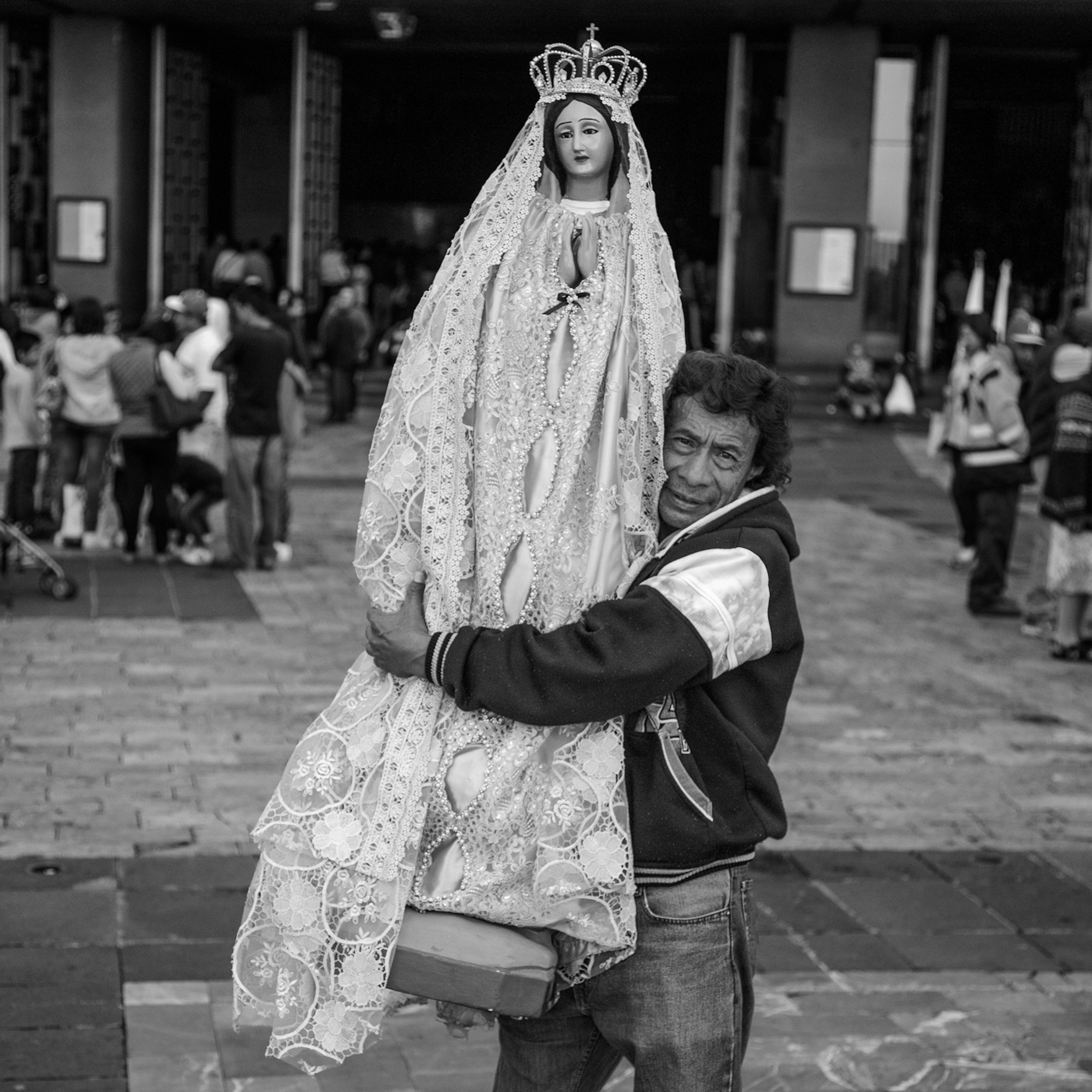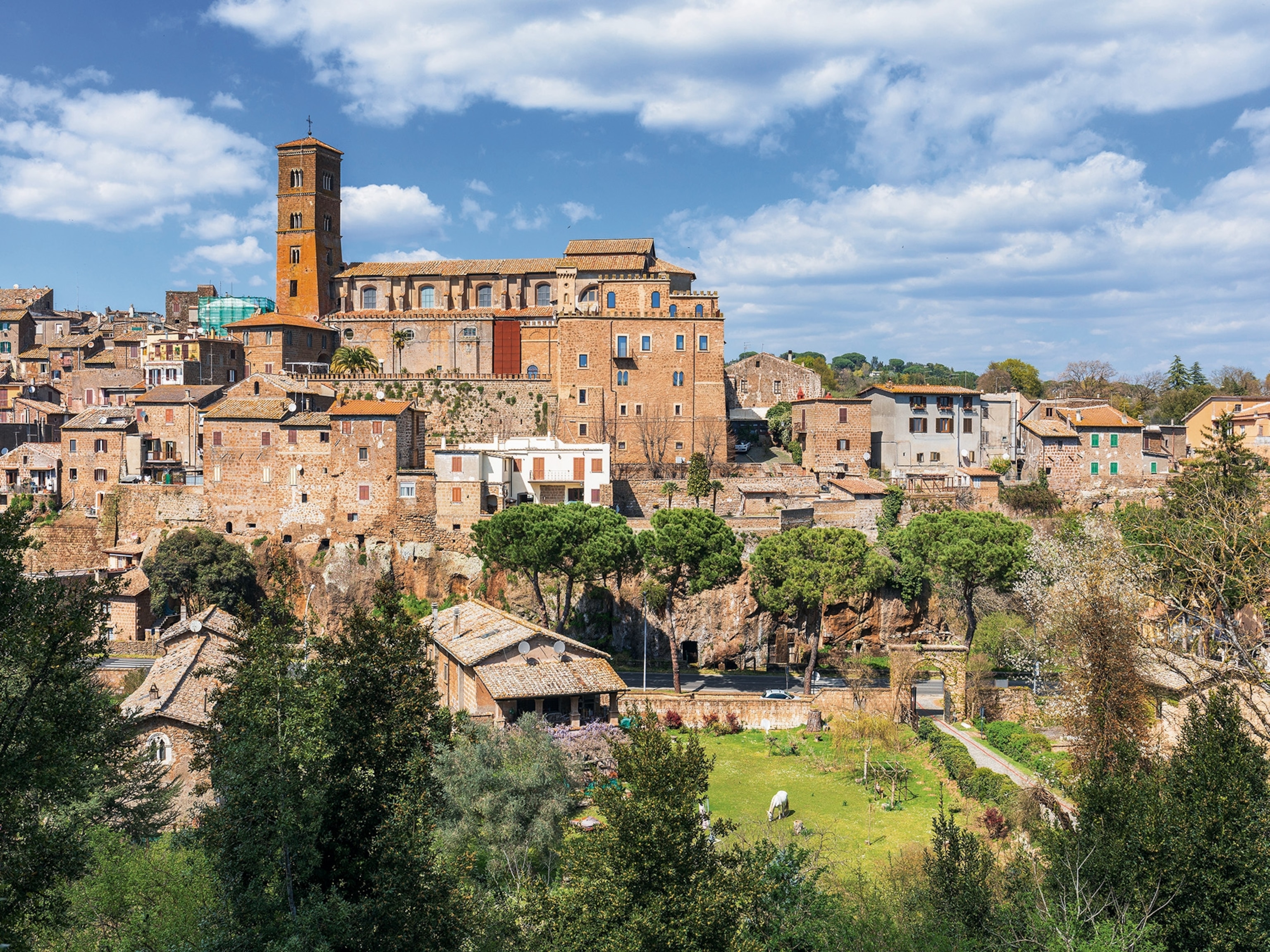
Mexico adapts its mega-pilgrimage to the Virgin Mary in a disrupted year
The annual feast day of the Virgin of Guadalupe is normally one of the world’s largest religious pilgrimages. This year it felt like “a zombie apocalypse movie.”
Any other year in mid-December, the Basilica of Our Lady of Guadalupe in Mexico City—the second most visited Roman Catholic site, surpassed only by the Vatican—would be awash in pilgrims. The boulevard that leads to its front gates and expansive plaza would be teeming with visitors, some crawling on their knees, many carrying framed paintings or figurines of the Virgin Mary, all enraptured in one of the world’s largest religious pilgrimages. Last year an estimated 9.8 million people showed up to pay their respects to Mexico’s patron saint.
This year Mexico is reeling from a coronavirus death toll of at least 118,000—the fourth highest globally. With cases steadily rising, there are fears that Mexico City–home to almost 9 million—will need to go under lockdown again. In late November, the church announced it would shut the doors of the basilica in mid-December to dissuade pilgrims from making the journey. An online campaign encouraged devotees to instead set up home shrines and tune in to a livestreamed mass.
"Our Lady will now come to our homes, instead of waiting for us at her home,” said Cardinal Carlos Aguiar Retes, the archbishop of Mexico City, at a press conference. “She will come through the communication technologies which, thank God, we now have."
A few days before December 12, the Virgin of Guadalupe’s feast day, an emergency alert went out to cell phones across Mexico City, urging residents to stay inside. At the basilica, police patrols and metal barricades reinforced the directive. It was the first time the pilgrimage had been canceled since 1926, during a period of political turmoil in Mexico.
But a trickle of determined pilgrims found ways to continue a tradition that has been celebrated for at least three centuries. In 1531, according to Catholic teaching, a peasant named Juan Diego was visited by an apparition of the Virgin Mary. She asked for a shrine to be built in her honor, but when Diego went to the local bishop, the cleric didn’t believe his story. According to the tale, the Virgin performed a miracle, imprinting her image on the fabric of Diego’s cloak.





A chapel dating to 1666 stands on the site of the apparition. And what’s said to be the original garment now hangs in a gilded frame inside the cavernous 1970s-era basilica, where moving walkways whisk dozens of pilgrims past every minute. They squeeze their eyes shut and mutter furtive prayers and gratitude for miracles granted in past years. The Virgin’s image is so embedded in Mexican culture and history that it has been used in everything from the 1810 revolt against the Spanish to the modern fight against femicide.
“Our faith is greater than this illness”
A few days before the basilica closed this year, pilgrims filtered in for an early celebration. A priest flung holy water at those requesting a blessing. Ines Cruz Camilo held a large tapestry of the Virgin and wore a blue surgical mask. She came in the morning on a bus of pilgrims from Veracruz, a four-hour drive from Mexico City. She planned to return after making a quick visit to the basilica without even stopping for breakfast. “We will head back to the truck so we don't get infected," she said.





The church allowed pilgrims to leave flowers and candles outside for basilica employees to bring in. Candles would be lit the night before the feast day. A small stand outside sold candles wrapped with a label so prayers and names could be directly inscribed. When the space got crowded, basilica workers crated the candles and moved them inside.
Nearby, Leonor Yadira Garcia and Bris Angel Sosa were lighting their own candles. They had traveled from Oaxaca to make good on a promise to the Virgin that they’d visit her shrine once they got married and had their first child. "Our faith is greater than this illness,” Garcia said. “[The virus] does exist—but we know that before God and before our prayers and supplications [to the Virgin], she will protect us."
As the sun set on December 11, employees began lighting rows of more than 15,000 candles radiating out from the basilica in the gated church grounds. Soon, an unusually harsh change of weather halted their progress as gusts of wind blew the flames out. At first the employees laughed, but then rain began to fall and their laughter turned to groans. They rushed to shelter indoors, leaving many of the candles unlit.



In normal years, the nighttime crowds are so great that rows of volunteers are interspersed along the main boulevard, sectioning off the throngs as they try to make their way into the basilica. Children are tied together with string so their parents don’t lose them in the moving crowd.
Last year, Mexican priest Fermin Sosa Rodriguez stood outside the basilica gift shop, blessing a never-ending stream of figurines and paintings thrust at him by passersby. “How important is [the Virgin]?” he asked. “You can see by how many people are outside.”



Some pilgrims have taken part in the tradition since they were children. Others dream of it, waiting and saving for the journey. They walk for days from their hometowns, or travel by bus, on foot, by bike, on horseback. Some come alone; others arrive in groups of more than a hundred. Spanish, English, Mayan, and Eastern European languages blend together into a faint roar of the devout.
Usually, as the sun rises on the morning of feast day, millions of voices join together to sing Las Mañanitas, a traditional happy birthday song to the Virgin. But this year, only Ana Rita Ruedas, a 64-year-old singer from the state of Jalisco, could be heard on the boulevard leading to the basilica. She stood alone, dressed in a cape embroidered with the image of Juan Diego meeting the Virgin, and sang, as she has for the past 14 years.
There would be no attending mass, climbing the hill to pray at the apparition site, or watching groups of dancers from across Mexico perform pre-Hispanic dances in animal skin costumes.


In an online mass, a socially-distanced and partially masked choir sang hymns, led by the basilica’s rector. A livestream of Juan Diego’s framed cloak played on the basilica’s homepage, where a form also allowed petitions to be submitted and then deposited at the feet of the Virgin, where they’d remain for a week.
Outside the basilica, small groups of visitors cautiously approached the barricades to pray, leaning on the cold metal and fingering their rosaries. When they’d walk away, a group of volunteers called the Topos, known for assisting in natural disasters, would come with sanitizing mist and spray down the metal.
A few pilgrims snuck around the street barricades to get closer to the basilica but found its gates impenetrable. Small groups were broken up by city officials and police officers. One woman chanted, “Viva la Virgin! Viva Mexico!” and a city official joined in her chant. Then he put a megaphone to his mouth, ordering the crowd to move on.

“It felt kind of like a zombie apocalypse movie,” says Mexican-American photographer Alicia Vera, who documented the emptiness of a typically chaotic holiday. The usual shops selling sweets, rosaries, and other trinkets were shuttered, and a lone vendor didn’t anticipate making more than 100 pesos—five dollars. But at least, he said, it would be something. In the past, visitors wore matching outfits to identify their pilgrimage group, and carried the large relics. This year, few Virgin figurines peeked out of backpacks. Vera speculates that those who did come hoped not to draw attention to themselves.
Still, in this strange year, some visitors felt compelled to make their first pilgrimage. Samuel Alvarez Morales works as a respiratory therapist with COVID patients in a hospital in Mexico City. After his father made a full recovery from the virus, the 22-year-old decided to pay a visit to the basilica to thank the Virgin. He walked along the boulevard in a zip-up jacket and grey beanie pulled over his ears. A white mask covered his face, and he clutched a small figurine of the Virgin with golden sunbeams radiating from her.
“My family is complete despite this global pandemic,” he said. “I want to thank her for that most of all.”








